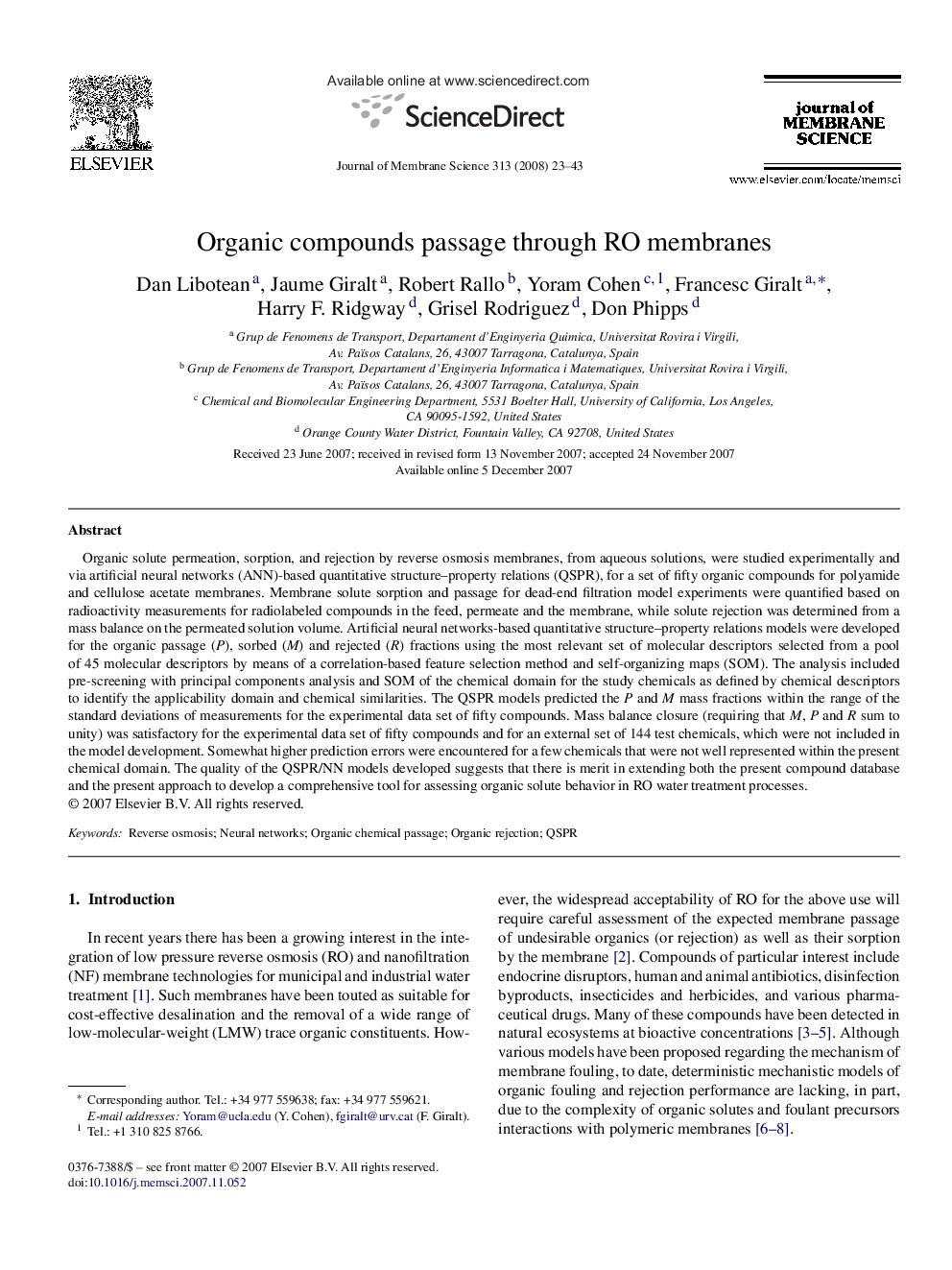| Article ID | Journal | Published Year | Pages | File Type |
|---|---|---|---|---|
| 638005 | Journal of Membrane Science | 2008 | 21 Pages |
Organic solute permeation, sorption, and rejection by reverse osmosis membranes, from aqueous solutions, were studied experimentally and via artificial neural networks (ANN)-based quantitative structure–property relations (QSPR), for a set of fifty organic compounds for polyamide and cellulose acetate membranes. Membrane solute sorption and passage for dead-end filtration model experiments were quantified based on radioactivity measurements for radiolabeled compounds in the feed, permeate and the membrane, while solute rejection was determined from a mass balance on the permeated solution volume. Artificial neural networks-based quantitative structure–property relations models were developed for the organic passage (P), sorbed (M) and rejected (R) fractions using the most relevant set of molecular descriptors selected from a pool of 45 molecular descriptors by means of a correlation-based feature selection method and self-organizing maps (SOM). The analysis included pre-screening with principal components analysis and SOM of the chemical domain for the study chemicals as defined by chemical descriptors to identify the applicability domain and chemical similarities. The QSPR models predicted the P and M mass fractions within the range of the standard deviations of measurements for the experimental data set of fifty compounds. Mass balance closure (requiring that M, P and R sum to unity) was satisfactory for the experimental data set of fifty compounds and for an external set of 144 test chemicals, which were not included in the model development. Somewhat higher prediction errors were encountered for a few chemicals that were not well represented within the present chemical domain. The quality of the QSPR/NN models developed suggests that there is merit in extending both the present compound database and the present approach to develop a comprehensive tool for assessing organic solute behavior in RO water treatment processes.
